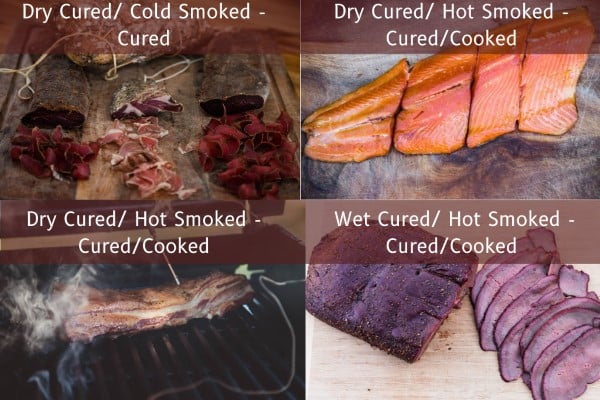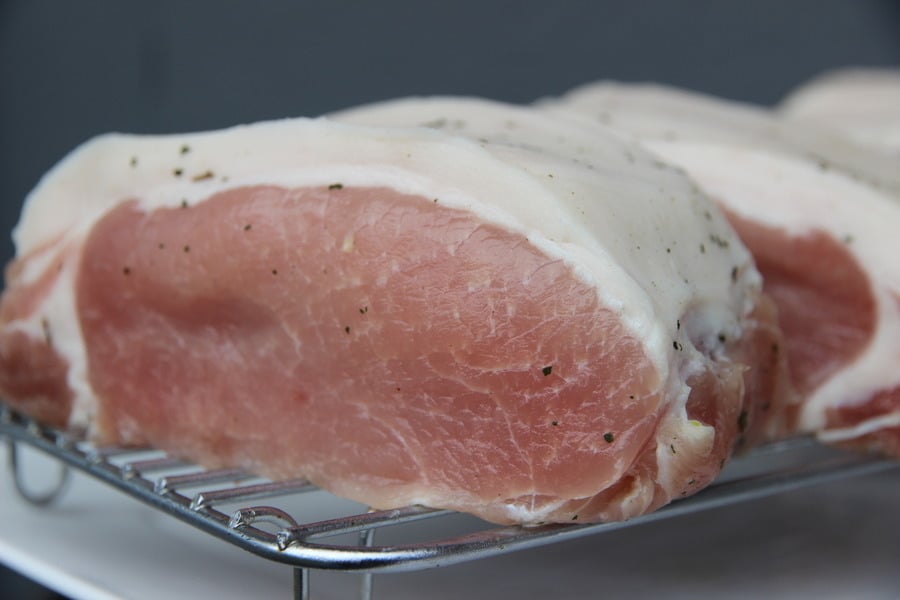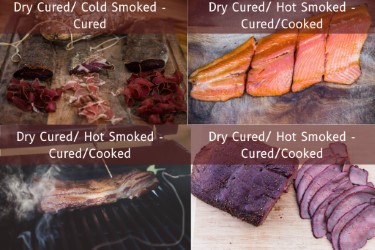Table of Contents
For decades, immersed in studying, working, learning, and teaching in the craft of meat curing, now sharing his passion with you through eat cured meat online resource.
Often, when people talk about smoking meat, we need to specify whether it is cold, warm, or hot-smoked. This will often dictate whether you need to cure the meat or not.
After studying, teaching, and learning about cured and smoking meats, this article will dive into what I have learned and how it can be effectively categorized.
Curing meat before smoking will depend on whether the goal is to retain moisture in the meat or to preserve and dry it. Some smoked meats, like Low and Slow, are not cured; a rub seasoning is used.
Whether You Need to Cure Meat Before Smoking
| Smoking Method | Curing | Description |
|---|---|---|
| Hot Smoked/Low and Slow – No Curing | No Curing – Rub | Pulled Pork, Smoked Brisket, Rack of Smoked Ribs |
| Hot Smoked/Indirect | Curing – Wet/Dry | Hot Smoked Salmon (how to make it), Hot Smoked Trout, Kransky, Frankfurter, Smoked Turkey, Hot Smoked Bacon |
| Hot Smoked/Direct | Curing – Wet/Dry | Fillets of Trout/Salmon |
| Cold Smoked/Indirect | Curing – Wet/Dry | Smokehouse, Tunnel Smokehouse/Barrel, Pellet Tube, Cold Smoked bacon. Hang for Drying/Preserving ie. dried fish, cold smoked dry cured salami, pork spec |
As you can see from the above table, it depends on the recipe or process. Although indirect hot smoking (here is a link to the hot smoking category list on this site), such as low and slow, has become prevalent, it is not a process in which curing is needed.

I’ve done other content articles and videos on the different aspects of curing because it comes down to either:
- seasoning meat for hot smoking
- light curing to hold moisture For hot smoking
- saturation or equilibrium curing meat for dry curing and possibly cold smoking
- saturation or equilibrium curing meat for fall salt preservation and trying possibly cold smoking
There is a link to the video at the bottom of the page about salt and its various curing or seasoning effects.
I’ll also highlight how these different amounts of salt vary the seasoning and curing of smoked meat below.
Types and Goals When Curing Meat
I have smoked many types of meat, such as trout, salmon, wild turkey, Venison (pastrami), tahr, and other seafood, primarily for moisture retention and flavor.
There is another aspect when you’re hot smoking (or cold smoking) meats like this: the salt on the surface of the meat helps bind some of the proteins. This, in turn, when left uncovered with some airflow in a cool environment, creates a pellicle on the meat, which often has a tacky or sticky feel to it.

The pellicle makes it easier for the smoke vapor to attach to the meat, giving it more smoke-flavored.
There are two goals for curing meat:
- Curing for Moisture Retention/Flavor (hot smoking)
- Curing for Preservation/Flavor (cold smoking)
Curing for moisture is essential when using lean meat during the curing hot smoking process for a wild game like turkey.
The salt helps hold the moisture around the surface of the meat, making it juicier and moister during the cooking and smoking phases.
For 20 years, I’ve cured for preservation and flavor using salt’s ability to preserve.
In terms of styles, this includes dry-cured whole-muscle meats like Italian salami and dry-cured Italian salami.
Dry curing meats (takes weeks or months) and cold smoking compared to low and slow smoking. In essence, low and slow smoking is baking outdoors with smoke around.
Low and slow smoking is also primarily about meat cuts with large amounts of fat that are cooked for many hours at low temperatures. The fat renders a mouthfeel and rich taste to things like smoked beef brisket or pulled pork.
I’ve spent 10 to 13 hours on low and slow temperature projects- they are an investment in time, that’s for sure! Even the 3-2-1 method for smoked pork ribs takes 6 hours of low-temperature cooking/smoking.
Curing Measurements for Different Meat Smoking
The modern technique for accurate curing of meat is called equilibrium curing.
In summary, this is the salt’s weight as a percentage of the meat’s total weight.
Here is a table representing the salt percentages for four different styles of meat smoking, in terms of different amounts of curing.
| Salt Percentage | Intended Use |
|---|---|
| ≤ 0.5% | Seasoning for cooking or low and slow rub |
| 1% – 2% | Wet or dry salt curing for hot smoking (indirect or direct) |
| 2% – 5% | Wet or dry curing for dry curing or cold smoking preservation projects |
| ≥ 10% | Wet or dry curing for long-term preservation such as salt fish with salt pork |
Saturation Curing or Brining
The other technique used for curing meat is to be smoked or not smoked.
The meat is covered with salt, either with a dry salt cure or brine cure, and ‘cures’ over time based on its thickness and density.
Anchovies or sardines, preserved in oil, are often cured and preserved as the first step in a wet brine.
Any incredibly dried types of fully-preserved meats, such as salt fish, salt pork, or salt beef, have all been fully saturated with salt. However, some salt pork products in Western countries are ‘quick’ commercial curing, which may not have long-term preservation as the primary goal of the producer.
Which Meat to Cure Before Smoking
To also answer the topic, here are common meats cured before smoking.
Hot Smoking – Indirect
- Hot Smoked Trout
- Hot Smoked Salmon
- Smoked Frankfurter
- Canadian Bacon
- Wet Cured Smoked Pastrami
- Smoked Turkey Breast
- Smoked Duck Breast
- Smoked Chicken
- Smoked Pork Loin
- Smoked Beef Brisket
- Smoked Ham Hock
- Smoked Lamb Shoulder
- Smoked Venison Sausage
Cold Smoking – Indirect
- Pork Speck
- Cold Smoked Dry Cured Bacon
- Cold Smoked Herring
- Cold Smoked Salmon
- Cold Smoked Trout
- Cold Smoked Mackerel
There are thousands of variations for cured and smoked meats from many areas and cultures across the world.
European heritage is solid for cured meats; many recipes are hundreds, sometimes thousands of years old. You can track cured meat back to the Roman Empire and beyond.
Types of Smoking
Technically, there are three technical categories of cured meat smoked with wood.
Every recipe I’ve seen for warm smoking has included the equivalent of pink curing salts since this is an in-between temperature where you are not cooking and you are not drying. You are cooking to an internal temperature, but you’re not cooking in the traditional sense.
Often, it is for a more intense smoke flavor and color on the meat.
- Hot Smoking
- Warm Smoking
- Cold Smoking
| Smoking Type | Temperature Range (Celsius) | Temperature Range (Fahrenheit) |
|---|---|---|
| Hot Smoking | 41-200°C | 100-400°F |
| Warm Smoking | 5-60°C | 40-140°F |
| Cold Smoking | Under 30°C | Under 86°F |

